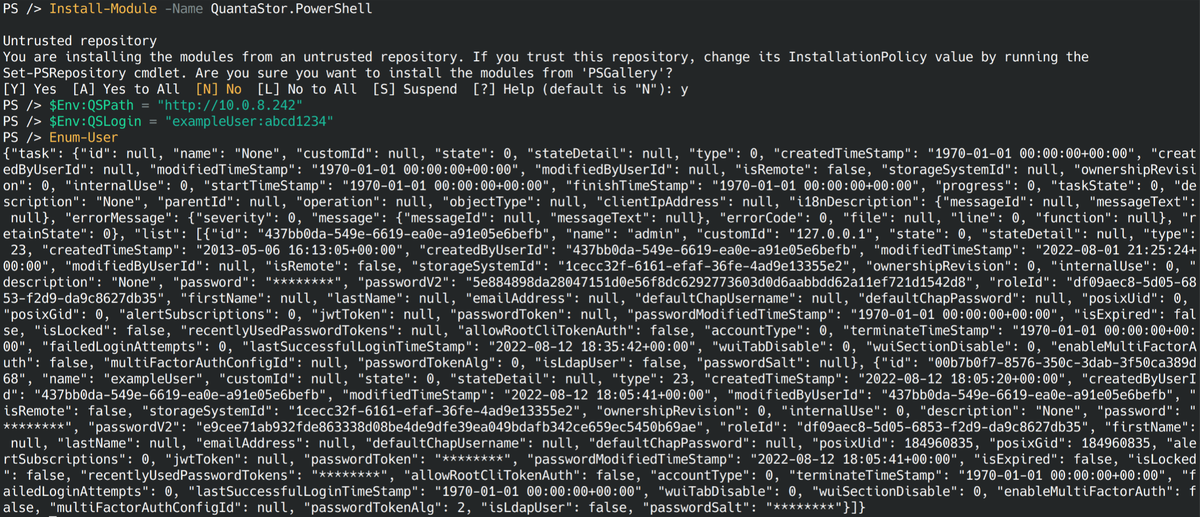QuantaStor PowerShell Command Reference: Difference between revisions
| Line 23: | Line 23: | ||
For example to view the parameters of <code>Add-User</code>: | For example to view the parameters of <code>Add-User</code>: | ||
Get-Help Add-User | Get-Help Add-User | ||
To list all users: | |||
Enum-User | |||
=== Environment Variables === | === Environment Variables === | ||
Revision as of 00:05, 16 November 2022
PowerShell installation methods
PowerShell is supported on Windows, Linux, and Mac. In addition to system packages and snaps provided by Microsoft, it can also be installed with a functioning recent dotnet SDK as a global tool (If you already have the .NET Core SDK installed):
dotnet tool install --global PowerShell
If you do not have the the .NET Core SDK installed and are on a much older version, then you can use the MSI installation package found at the following URL: https://learn.microsoft.com/en-us/powershell/scripting/install/installing-powershell-on-windows?view=powershell-7.3#msi
Recommended versions
To use the QuantaStor PowerShell module, you must be on PowerShell 7 or newer and dotnet 6 or newer.
To check what version you have installed, execute the following command from a PowerShell console: $PSVersionTable
QuantaStor PowerShell module installation
Our module is hosted on the PowerShell gallery and can be found here. Installation is easily done through PowerShell:
Install-Module -Name QuantaStor.PowerShell
Commands
The commands can be slightly renamed from other instances to be closer to PowerShell standards. For example instead of UserEnum there is Enum-User. All commands can be listed with:
Get-Command -Module QuantaStor.PowerShell
And help for a command can be viewed with:
Get-Help COMMAND
For example to view the parameters of Add-User:
Get-Help Add-User
To list all users:
Enum-User
Environment Variables
There are two current environment variables QSPath and QSLogin. Unless set, QSPath is http://localhost/. Commands for setting these variables in PowerShell are below:
$Env:QSPath = "http://x.x.x.x:y"
$Env:QSLogin = "username:password"
